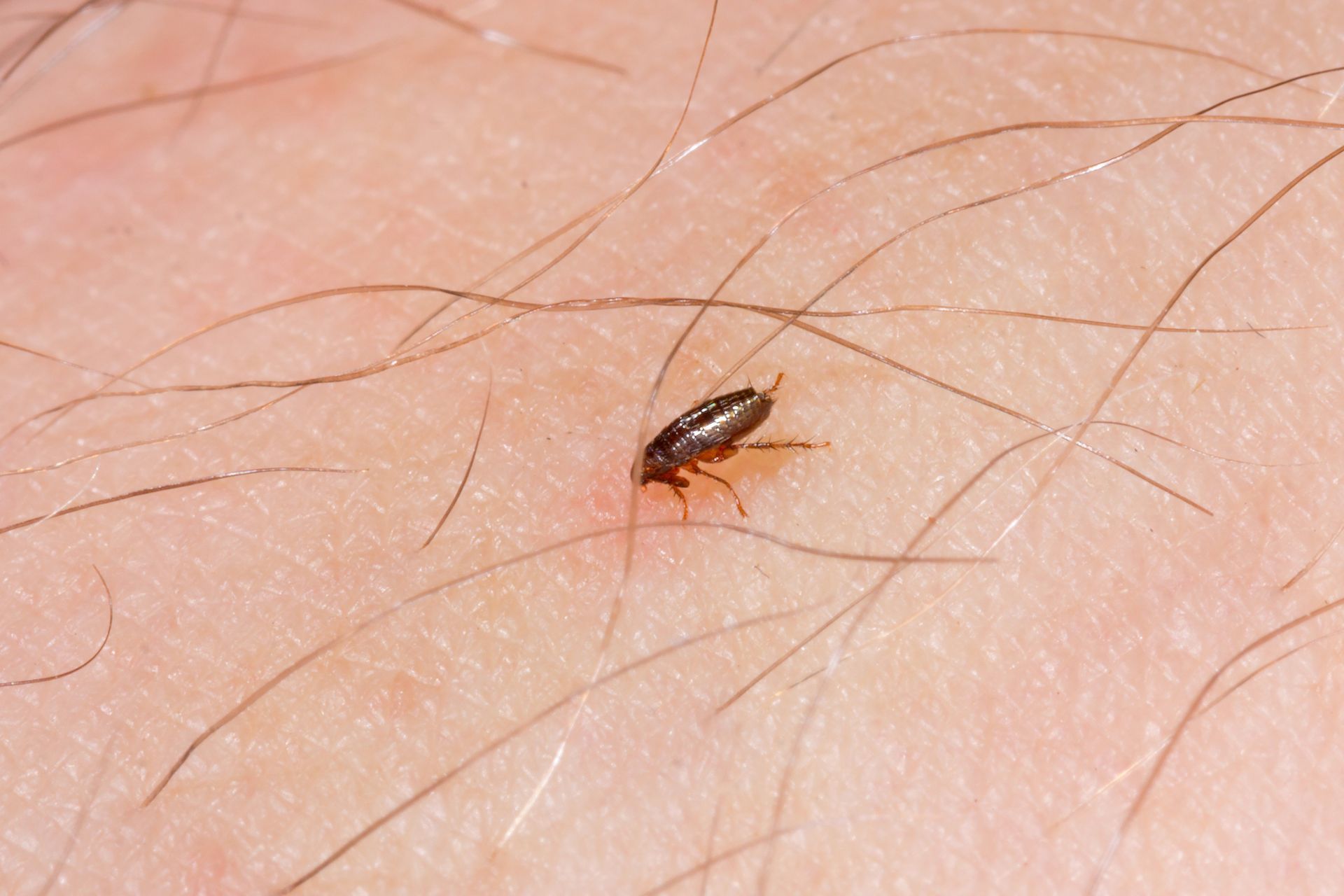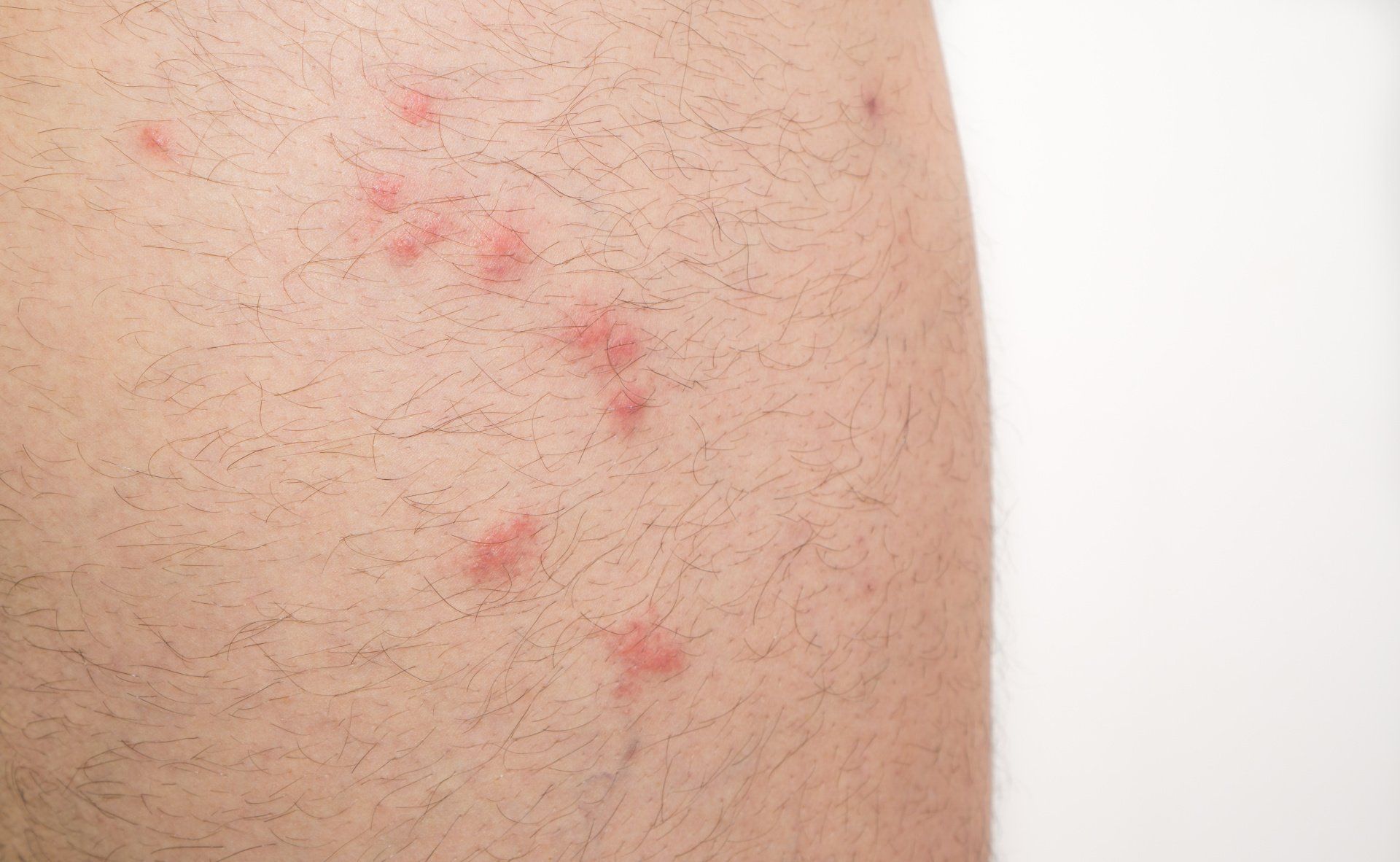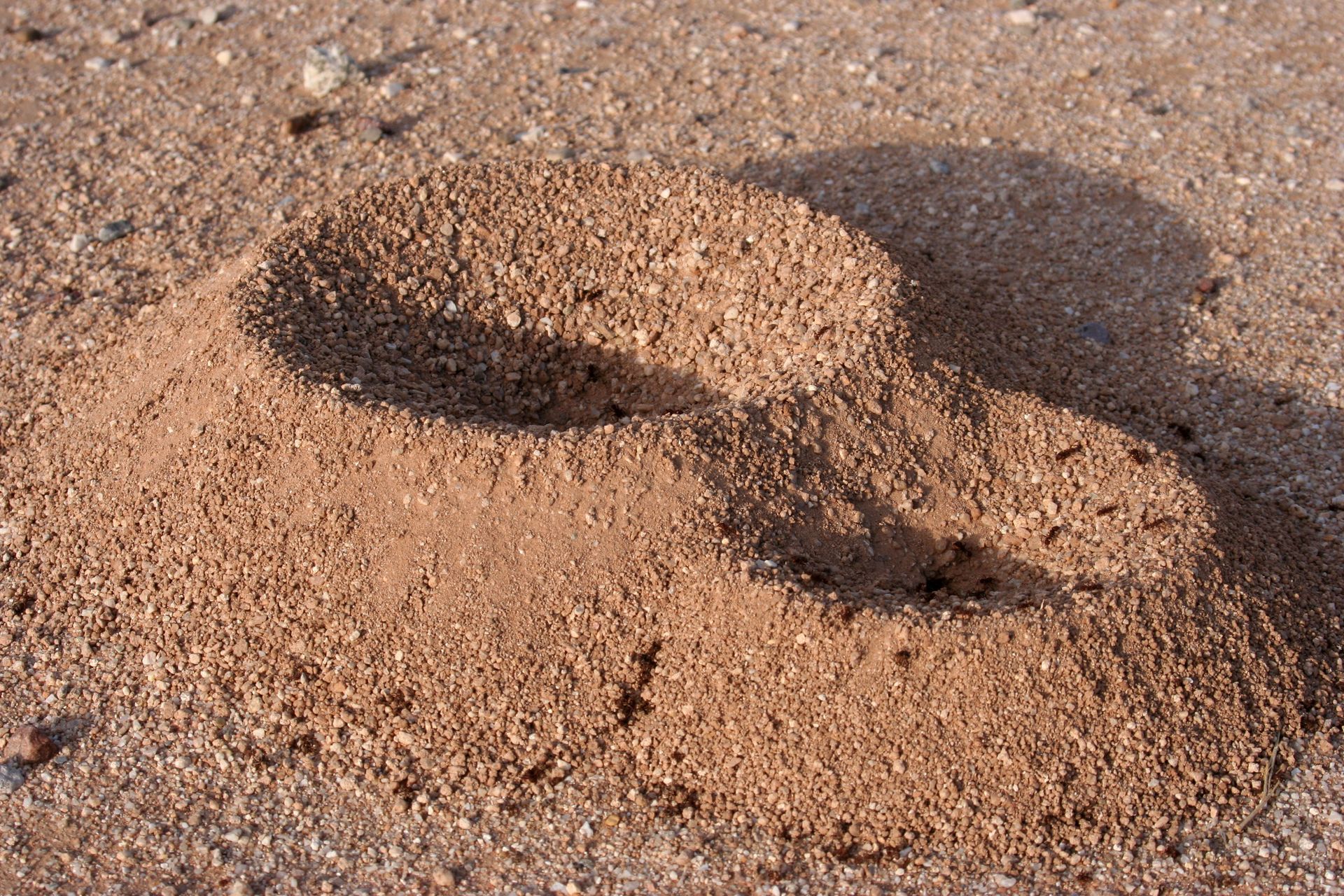Can Humans Get Fleas?

Can Humans Get Fleas From Their Pets
You might think that fleas pose more of a risk to your pets than yourself. But consider this: fleas are tiny insect that can jump up to 13 inches! This means that when fleas get on your pet, it is extremely easy for them to get on you. Anytime your pet is scratching close by, they could unknowingly be shedding fleas that may be looking for another host to feed on.
That being said, fleas prefer to live on animals with fur or feathers because they’re able to hide in that cover and safely reproduce by laying eggs that will stay buried in dense fur or plumage. While fleas will occasionally jump from your pets to bite humans, they do not have the cover they need to live and reproduce successfully.
It is important to remember that since your pets are usually in close proximity to you, or sharing your bed or furniture, they can definitely transfer fleas which can result in flea bites. However, with regular washing, fleas are not able to remain for long.
Can Fleas from Your Pets Live on Humans?
It is rare to find fleas on humans for an extended period. Fleas prefer to live on animals with fur or feathers so they can burrow into the fluff for shelter and reproduction. Fleas lay eggs in animal fur/feathers that hatch into larva, mature into adult fleas, and then reproduce again. The flea life cycle will continue over and over again until your pet receives treatment.
In the United States, fleas most commonly live on cats, but can also live on:
- Dogs
- Rodents
- Birds
- Chickens
There are over 2,500 species of flea around the world, and each species generally prefers one type of animal over another. While there are fleas that will feed on humans, there are none that prefer humans as their primary source of blood meals. This is because human skin is not the ideal environment for fleas. Humans don’t have enough hair on our bodies to give fleas adequate shelter for survival and reproduction. Instead fleas are attracted to animals that can provide them with shelter and a sustainable source of food.
Can Fleas Live on Humans in Their Hair?
Humans can get fleas in their hair, but they won’t be able to live there for long. Human hair (on your head or anywhere else on your body) typically isn’t thick enough for fleas to survive. Even if a flea lands on you, it will jump off soon in search of better shelter. It is also unlikely that fleas would be able to reach a human’s scalp because it is simply outside of their reach. For fleas to reach a human’s scalp, it would most likely find its way their when someone is sleeping in close proximity to an infested pet.
Fleas would also need to feed on a human for a period of 12 hours to produce viable eggs which significantly decreases the likelihood of a successful brood. A simple morning shower with shampoo will ensure that all fleas are washed away or killed that might have hopped onto your scalp while you were sleeping.
Do Human Fleas Exist?
There are only a couple of common species of fleas that live on humans: Pulex irritans and Tunga penetrans. Thankfully, both pulex irritans and tunga penetrans, also known as jiggers, are extremely rare in the United States. You are much more likely to receive a bite from a cat flea than get a human flea infestation.
Other Types of Fleas
There are over 2,500 different types of fleas, several of which are named after the host they are most attracted to. The types of fleas that cause the most problems for humans are:
- Cat Fleas (Ctenocephalides felis): In the United States, most flea infestations are caused by the cat flea. Cat fleas are often found on cats, but they can live on dogs, as well. Our pets will carry them into our homes, where they’ll hop around our furniture, reproduce, and give us little bites.
- Dog Fleas (Ctenocephalides canis): Dog fleas can also cause infestations in your home, but they’re less common in the America than cat fleas. Like the cat flea, dog fleas can live on both dogs and cats.
- Rat Fleas (Xenopsylla cheopis): This type of flea lives on rats, more specifically the Norway rat and roof rats. They won’t infest your home unless your home has rats, but they can be concerning because they’re a main carrier of the bubonic plague. Fleas transfer the plague to rats, and rats can spread it to humans.
- Chigoe Fleas (Tunga penetrans & Tunga trimamillata): These are some of the only types of fleas that live on humans. Chigoe fleas are known to burrow into human skin, especially the feet, and they can cause swelling, itching and skin ulcers. If not treated, they can cause more severe problems, like loss of toenails. Thankfully, Chigoe fleas are not common in the United States. They usually live in the tropics and subtropics, in places like Latin America and Central Africa.
- Hen Fleas (Echidnophaga gallinacea): Hen fleas live on chickens and birds. They prefer to live on birds, but they’re more likely to come into contact with humans through infested chickens. If you have chickens on your property, you can spot a hen flea infestation very easily. The fleas will gather around the chicken’s eyes comb, and wattle. That’s why they’re also known as “sticktight fleas.”
Do Fleas Bite Humans?
Fleas can bite humans. Most of the time they’ll bite you after jumping onto you from your pet. A flea bite will look like a little red bump, similar to bed bug bites. It’s common for them to bite you three times in a row (which is humorously referred to as “breakfast, lunch, and dinner” by pest experts).
Flea bites will not cause serious health effects on most people, and usually don’t cause any skin lesions. However, if you’re exposed to flea bites for a long period of time, you may develop a hypersensitive reaction to them. Some people may have allergic reactions or hypersensitivity to flea bites, in the same way you can be hypersensitive to bee stings. It’s also possible for the bites to become infected if you scratch at them.
For these reasons, it’s important to deal with flea infestations as soon as possible.
What Do Flea Bites Look Like?

Flea bites are most commonly found on your legs, feet, and ankles (the parts of your body that have the most contact with your pet). You might also get them on your upper body if your pet sleeps in your bed or if you frequently hold your pet.
Flea bites typically look like little red bumps, and may be accompanied by:
- Itching
- Swelling
- Redness
- Pain or soreness in the area
- A burning sensation in the area
What Risks Come with Flea Bites?
Flea bites can be harmful to you and your pets. They can cause allergic reactions, transmission of diseases, and risk of tapeworms.
Allergic Reactions
- Pets: Your pets will likely scratch the flea bites, causing raw skin or loss of fur. Scratching can also cause the flea bites to become infected.
- Humans: You can suffer an allergic reaction to flea bites (flea allergy dermatitis) if your body is sensitive to the flea’s saliva. Allergic reactions can cause irritated skin, severe itchiness, and hives. In serious cases, the bites may become infected.
Diseases
Humans: Fleas may carry diseases that they can transmit to you when they bite you. Flea-borne diseases include bubonic plague and typhus. Both are serious and require medical treatment.
Tapeworms
Pets and Humans: Fleas may carry tapeworms that can enter yours or your pet’s body when they’re ingested. Pets may ingest fleas when they’re biting at them or gnawing at their flea bites, while children may ingest them accidentally. Tapeworms are not usually serious, but it’s best to get a medical checkup if you or your pet has ingested one.
How to Treat Flea Bites
Seek medical treatment if you’re suffering from an allergic reaction to flea bites, or call emergency first response if your reaction is very severe.
Otherwise, you can treat flea bites at home to stop the itchiness and keep them from becoming infected.
- Wash the area with the bites in soap and water
- Apply antiseptic cream over the bites
- Let the bitten area heal (you might want to cover the area with a band-aid to keep it from rubbing against anything and irritating the bites)
How to Get Rid of a Flea Infestation
There are several ways you can get rid of a flea infestation on your pets and in your home.
Removing Fleas on Your Pet
It’s always best to speak with a veterinarian if your pet is infested with fleas. A veterinarian can determine the most effective way to kill fleas and treat any injuries they might have caused to your pet.
- Prescribed Flea Medication: A veterinarian may give you prescribed medication that will eliminate fleas. Make sure you follow the instructions your veterinarian gives you.
- Over-the-Counter Medication: You can buy over-the-counter flea medication to treat fleas on your pets. Make sure you follow the instructions on the medication step by step to effectively get rid of fleas.
- Use a Flea Comb: You can use a flea comb to brush the fleas off your pet. Make sure you do this in the shower or a location outside your home so you can wash away the fleas or keep them from spreading around your home.
- Wash Your Pet: Wash your pet thoroughly with soap and water. Let the soap soak over your pet for at least 5 minutes to make sure it kills all the fleas. Be careful while you’re washing the pet with soap or prescription medication and keep it from getting into your pet’s eyes, nose, and mouth.
- Use Protective Gear: When you’re cleaning your pet, use gloves and clothing that covers your arms, legs, feet, and hair. Otherwise, the fleas could hop onto you and bite you.
Removing Fleas from Your Home and Around Your Property
- Wash Your Pet Accessories: Wash your pet’s bed, toys, and anything else your pet frequently touches. Soak everything in hot water to kill all the fleas.
- Clean Upholstery: Clean the furniture in your home to remove fleas, especially carpets, rugs, and sofas. Vacuuming is an effective way to suck up and of the fleas that might be hopping around on your furniture. Just make sure you dispose of the vacuum bag as soon as possible and don’t let it sit in your vacuum cleaner, or else you could risk the fleas escaping. Another way to kill off fleas infesting furniture is using a steamer. The hot pressurized steam will raise the temperature above a flea’s temperature threshold which will kill off fleas, eggs, and larvae.
- Seal Your Home: Close up holes or gaps in your baseboards, siding, window frames, and other places where insects can slip into your home. You can also apply insecticides to the baseboards around your home but consult with a pest management service to make sure the insecticides are not harmful to your pets or family.
Enlist a pest control service if your flea infestation is severe or if you’re not entirely sure what the scope of the infestation is. Pest management specialists can evaluate the problem and come up with the most effective and safest solutions to get the fleas out of your home.
How to Prevent Fleas
It can be difficult to get rid of a pest infestation, but it’s much easier to prevent a flea infestation. Just take a few simple precautions:
- Clean your pet’s sleeping area regularly (this is also better for your pet’s health!)
- Wash your pet frequently and inspect them for fleas
- Keep your pet from entering spaces where there are likely to be fleas; close up holes and crawl spaces around your property so your pet can’t go in
Call EcoGuard Pest Management If You Are Dealing with Fleas
Need to get rid of a flea infestation? EcoGuard Pest Management will get your home flea-free. We know where to look for signs of a flea infestation and can assist with flea treatment. Combatting fleas requires treating pets to be fully effective so our team will provide the necessary education to ensure that your pets and your home are effectively treated for any fleas. Contact us today to schedule an appointment.

















